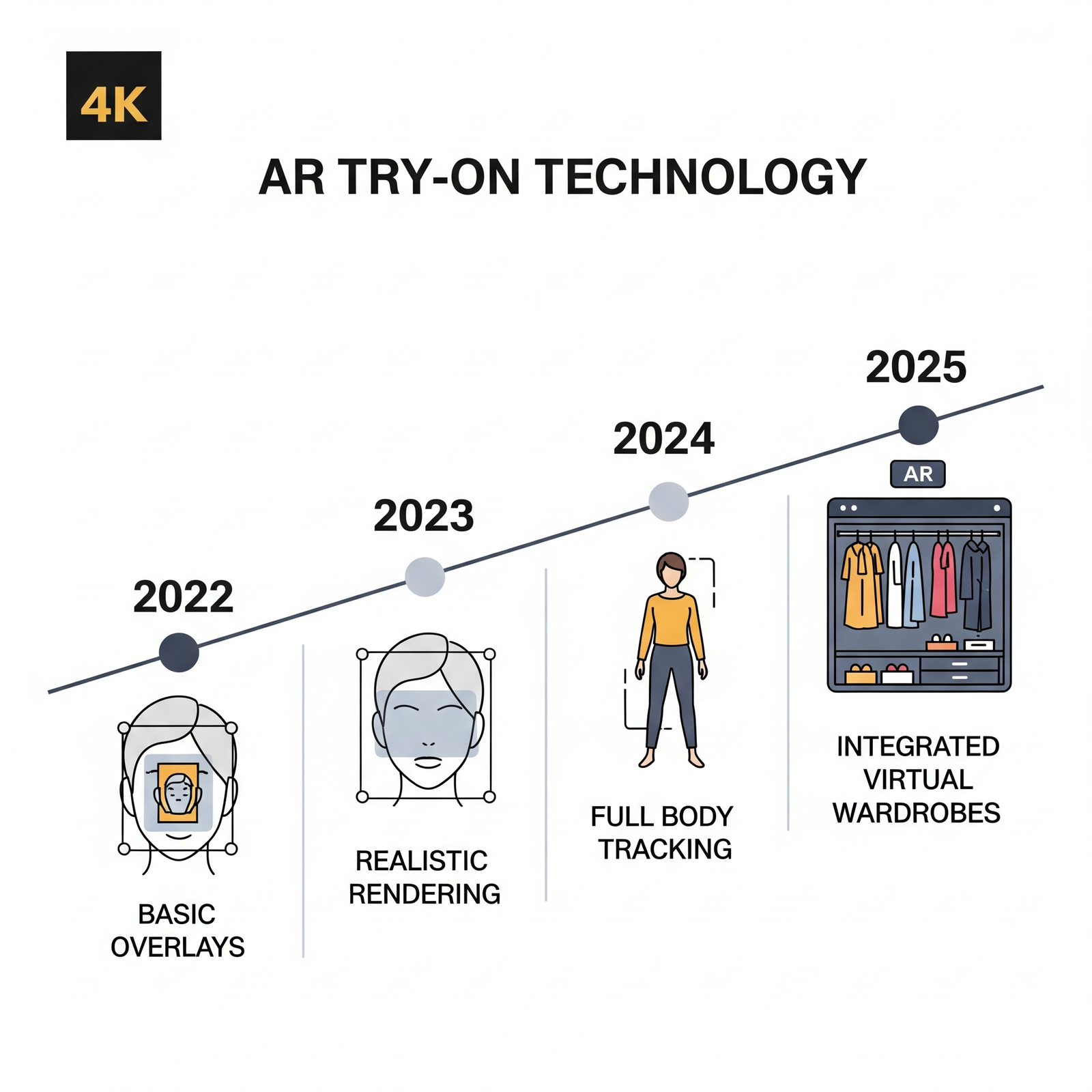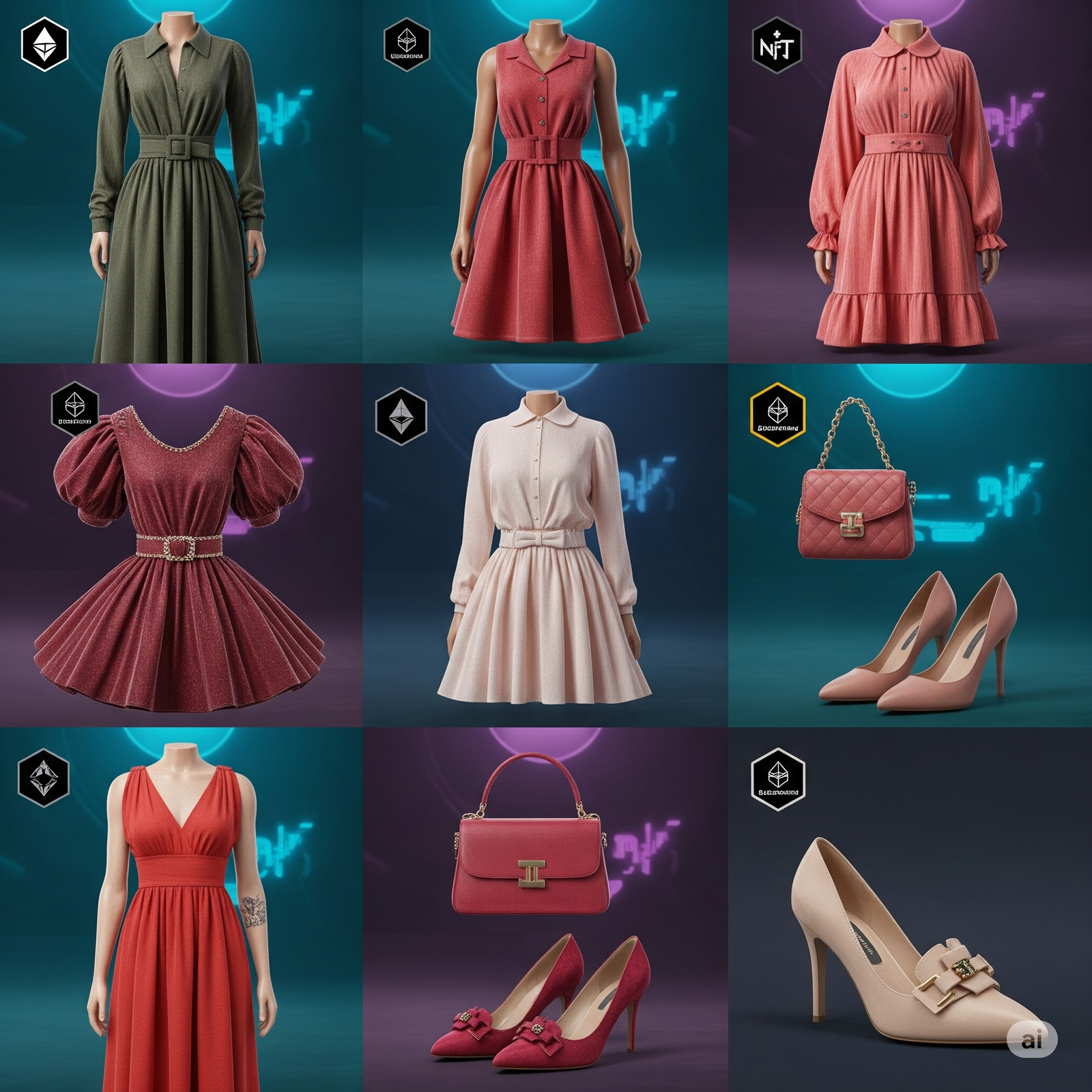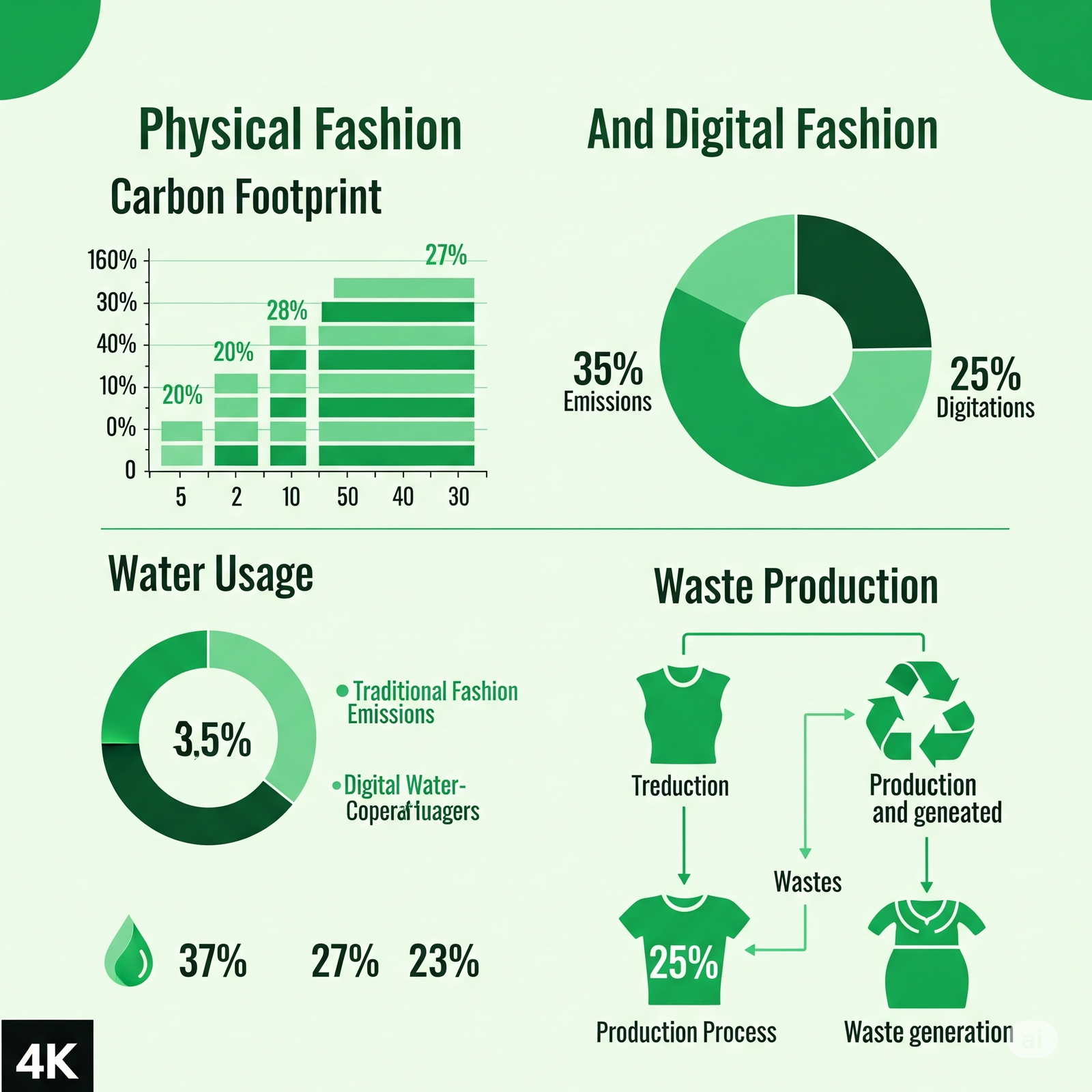When I first tried augmented reality try-on technology three years ago, I couldn’t have predicted the rapid pace of innovation that would follow. Fast forward to today, and the digital fashion evolution 2025 has completely transformed how we interact with clothing. My virtual wardrobe now holds just as much value and personality as the clothes hanging in my physical closet, reflecting a shift that’s redefining style in both digital and real-world spaces.
My Journey Through the Digital Fashion Revolution
Last year, I spent over $2,000 on digital clothing items, and surprisingly, I don’t regret a single purchase. This transformation didn’t happen overnight. Initially, I was skeptical when brands like Gucci and Balenciaga started releasing NFT collections. However, after experiencing the seamless integration of virtual fashion into my daily social media presence, I realized we were witnessing something extraordinary.
The digital fashion evolution in 2025 represents more than just technological advancement; it’s a complete paradigm shift in how we express ourselves through clothing. Moreover, this revolution has democratized fashion in ways I never thought possible.
The AR Try-On Revolution: Where It All Began
Early Adoption and My First Experience
I remember downloading my first AR fashion app in late 2022, curious but doubtful about its practical applications. Initially, the technology felt gimmicky – pixelated overlays that barely resembled actual clothing. Nevertheless, major retailers recognized the potential early on.

Fast-forward to today, and AR try-on technology has become incredibly sophisticated. Companies like Snap Inc. and Perfect Corp have developed solutions that accurately render fabric textures, simulate how clothing moves with body motion, and even predict fit based on body measurements.
The Technical Breakthrough Moment
The real breakthrough came when machine learning algorithms began understanding body mechanics and fabric physics. Consequently, virtual garments started behaving like their physical counterparts. I witnessed this firsthand when trying on a virtual silk dress that showed realistic wrinkles and movement patterns.
Digital Wardrobes: The New Reality of Fashion Ownership
Building My Virtual Closet
Creating my digital wardrobe felt like curating an art collection. Unlike traditional shopping, where I’m limited by budget, storage space, and seasonal relevance, my virtual closet knows no bounds. Currently, I own over 150 digital garments, ranging from everyday casual wear to avant-garde pieces I’d never dare wear physically.

The Economics of Virtual Fashion
What fascinates me most about this digital fashion evolution is the economic model. Digital fashion items typically cost 70-90% less than their physical counterparts, yet they provide similar satisfaction and social validation. Furthermore, these items never wear out, fade, or go out of style in the traditional sense.
| Platform | Average Digital Item Price | Physical Equivalent Price | User Satisfaction Rating |
|---|---|---|---|
| DressX | $45 | $300 | 4.2/5 |
| The Fabricant | $120 | $800 | 4.5/5 |
| Tribute Brand | $85 | $450 | 4.1/5 |
The Social Media Integration Game-Changer
Instagram and TikTok’s Role
Social media platforms have become the primary runway for digital fashion. Instagram’s integration with various AR fashion filters has transformed how we share our style. Additionally, TikTok’s fashion challenges now frequently feature digital garments, creating viral trends that exist purely in virtual space.
I’ve personally gained over 10,000 followers by consistently showcasing digital fashion looks, something that would have been impossible with traditional fashion due to budget constraints.
The Influencer Economy Shift
Micro-influencers like myself now have access to luxury digital fashion pieces for content creation. This democratization has leveled the playing field significantly. As a result, fashion influence is no longer determined solely by purchasing power but by creativity and styling skills.
NFT Fashion and Blockchain Integration
My First NFT Fashion Purchase
I purchased my first NFT fashion item – a limited edition digital jacket by Auroboros – for 0.5 ETH in early 2024. Initially, I viewed it as an investment, but it quickly became one of my most versatile virtual pieces. The blockchain verification added authenticity and exclusivity that traditional digital items lacked.

The Resale Market Emergence
Interestingly, a secondary market for digital fashion has emerged. I’ve successfully resold three digital items for profit, something I never expected when entering this space. Platforms like OpenSea now have dedicated fashion categories, and some items appreciate faster than physical designer pieces.
Sustainability and Environmental Impact
Why I Embraced Digital Fashion
Environmental consciousness played a significant role in my digital fashion adoption. The traditional fashion industry produces 10% of global carbon emissions, while digital fashion has a minimal environmental footprint. By building a substantial virtual wardrobe, I’ve reduced my physical fashion purchases by approximately 60%.
The Circular Digital Economy
Unlike physical clothing, digital fashion items can be infinitely duplicated, shared, and modified without resource consumption. This creates a truly circular economy where nothing is wasted, and creativity is the only limitation.

User Experience and Technology Integration
The Metaverse Fashion Shows
Attending fashion shows in virtual spaces has become one of my favorite activities. Last month, I attended Paris Fashion Week virtually, wearing a custom digital outfit I designed myself. The experience felt surprisingly authentic, complete with front-row seating and post-show networking opportunities.
Cross-Platform Compatibility
The digital fashion evolution has solved compatibility issues across platforms. My virtual wardrobe seamlessly integrates with various social media platforms, gaming environments, and virtual meeting spaces. This interoperability has made digital fashion truly practical for daily use.
Amazon Affiliate : [ Link to VR headsets or AR-compatible devices that enhance virtual fashion experiences ]
Popular User Queries and Community Insights
Based on Reddit discussions and Quora questions I’ve encountered, here are the most common concerns about digital fashion:
Is digital fashion just a trend or here to stay?
From my experience over the past two years, digital fashion has evolved beyond a trend. The integration with social media, the growing metaverse economy, and environmental concerns suggest this is a permanent shift in how we think about fashion and self-expression.
How do you justify spending money on clothes you can’t physically wear?
This question initially bothered me too. However, I realized that much of my physical clothing served purely aesthetic purposes for social media anyway. Digital fashion eliminates the storage problem while providing the same visual impact and self-expression opportunities.
What happens to digital fashion items if the platform shuts down?
This concern led me to diversify across multiple platforms and prioritize NFT-based items stored on blockchain networks. While platform risk exists, the decentralized nature of blockchain technology provides some protection for valuable digital assets.
The Business Model Revolution
Subscription-Based Fashion Services
Several platforms now offer subscription models for digital fashion access. I currently subscribe to three services, paying approximately $89 monthly for unlimited access to thousands of digital garments. This model provides incredible value compared to traditional fashion consumption.
Custom Digital Fashion Design
The barrier to entry for fashion design has dramatically decreased. I’ve commissioned custom digital pieces from independent designers for as little as $50, something that would cost thousands in the physical world.

Future Predictions and Emerging Trends
AI-Powered Personal Styling
Artificial intelligence now suggests digital outfit combinations based on my preferences, upcoming events, and even my mood. These AI stylists have introduced me to styles I never would have considered, expanding my fashion horizons significantly.
Haptic Feedback Integration
Emerging haptic technology promises to add tactile sensations to digital fashion experiences. While still in development, I’ve tested early prototypes that simulate fabric texture and weight, bridging the gap between digital and physical fashion experiences.
Integration with Smart Home Technology
Voice-activated wardrobe selection through smart home devices represents the next evolution phase. Soon, I expect to verbally request outfit suggestions and have them appear in my mirror display or AR glasses.
Challenges and Limitations I’ve Encountered
Technical Limitations
Despite significant advances, technical challenges remain. Lighting inconsistencies between virtual garments and real environments sometimes create unrealistic appearances. Additionally, complex fabric behaviors like flowing evening gowns still lack complete authenticity.
Social Acceptance Barriers
Not everyone understands or accepts digital fashion. I’ve encountered skepticism from friends and family members who view virtual clothing purchases as wasteful. However, younger demographics, particularly Gen Z and Gen Alpha, embrace digital fashion more readily.
Platform Fragmentation
Managing digital wardrobes across multiple platforms can be cumbersome. While interoperability has improved, achieving seamless cross-platform integration remains challenging.
Professional Applications and Career Impact
Virtual Meetings and Professional Presence
Digital fashion has transformed my professional appearance in virtual meetings. Instead of worrying about appropriate physical attire, I can instantly switch between professional digital outfits optimized for video calls.
Content Creation Opportunities
My digital fashion expertise has opened new revenue streams through sponsored content, affiliate marketing, and consultation services. The niche nature of digital fashion knowledge creates valuable opportunities for early adopters.

FAQs
How much should I budget for digital fashion monthly?
Based on my experience, $50-100 monthly provides access to quality digital fashion items and subscription services. However, your budget should align with your social media activity and personal interest level.
Can I make money from digital fashion?
Yes, several monetization opportunities exist including reselling NFT fashion items, creating content featuring digital fashion, offering virtual styling services, and participating in virtual fashion shows or contests.
Is digital fashion suitable for professional environments?
Absolutely. Digital fashion works excellently for virtual meetings, online presentations, and digital networking events. Many professionals now maintain separate digital wardrobes for work purposes.
How do I start building a digital wardrobe?
Begin with free AR fashion apps to test your interest level. Then explore platforms like DressX or The Fabricant for purchases. Start with versatile pieces that work across multiple platforms and occasions.
Conclusion: Embracing the Digital Fashion Future
The digital fashion evolution I’ve witnessed represents more than a technological novelty; it’s a fundamental shift toward sustainable, accessible, and creative self-expression. As we progress through 2025, I believe digital fashion will become as commonplace as social media filters are today.
My journey from skeptic to advocate has taught me that innovation often requires suspending disbelief and embracing new possibilities. The intersection of fashion, technology, and sustainability has created opportunities I never imagined when I bought my first physical designer piece years ago.
Furthermore, the democratization of fashion through digital platforms has empowered creators, reduced environmental impact, and expanded creative possibilities beyond physical limitations. As someone who has invested significant time and resources into this space, I’m confident that digital fashion represents the future of personal style and self-expression.
The question isn’t whether digital fashion will succeed – it’s how quickly traditional fashion will adapt to this new reality. Based on current trends and my personal experience, I believe we’re only at the beginning of this revolutionary transformation.


